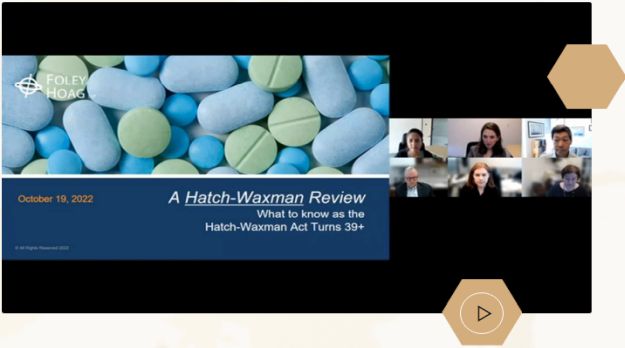In 1984, the Hatch-Waxman Act transformed the landscape of pharmaceutical discovery, innovation, and patents in the United States. The Act struck a careful balance between competition and innovation: creating ANDAs - an abbreviated route for bringing generic drugs to market with a mechanism to resolve patent litigation between the brand and generic companies concurrent with FDA review of the ANDA - while also creating Patent Term Extensions and new R&D incentives through market exclusivities. This historic law established the framework for how small molecule drugs get to market, through a combination of features such as: Safe Harbors from patent infringement, patent listings in the FDA's Orange Book of approved pharmaceuticals, so-called skinny labels for generics targeting a subset of approved indications, and Citizen Petitions. New issues have emerged in light of this unique framework, including the role of formulary listings and insurers in patent infringement, and so much more.
Foley Hoag attorneys from a diverse set of practice areas presented their perspectives on the Hatch-Waxman Act, its impact, and its future. Please view the discussion on the Act in its 40th year as a foundation for life science innovation.
Download presentation materials here.
Speakers
- Sarah Burg, Partner, Foley Hoag LLP
- Paul Kim, Partner, Co-Chair, Government Strategies Practice and FDA Practice, Foley Hoag LLP
- Jeffrey I.D. Lewis, Partner, Foley Hoag LLP
- Tina Papagiannopoulos, Associate, Foley Hoag LLP
- Mital Patel, Associate, Foley Hoag LLP
- Laura Wzorek, Ph.D., Associate, Registered Patent Attorney, Foley Hoag LLP
The content of this article is intended to provide a general guide to the subject matter. Specialist advice should be sought about your specific circumstances.







